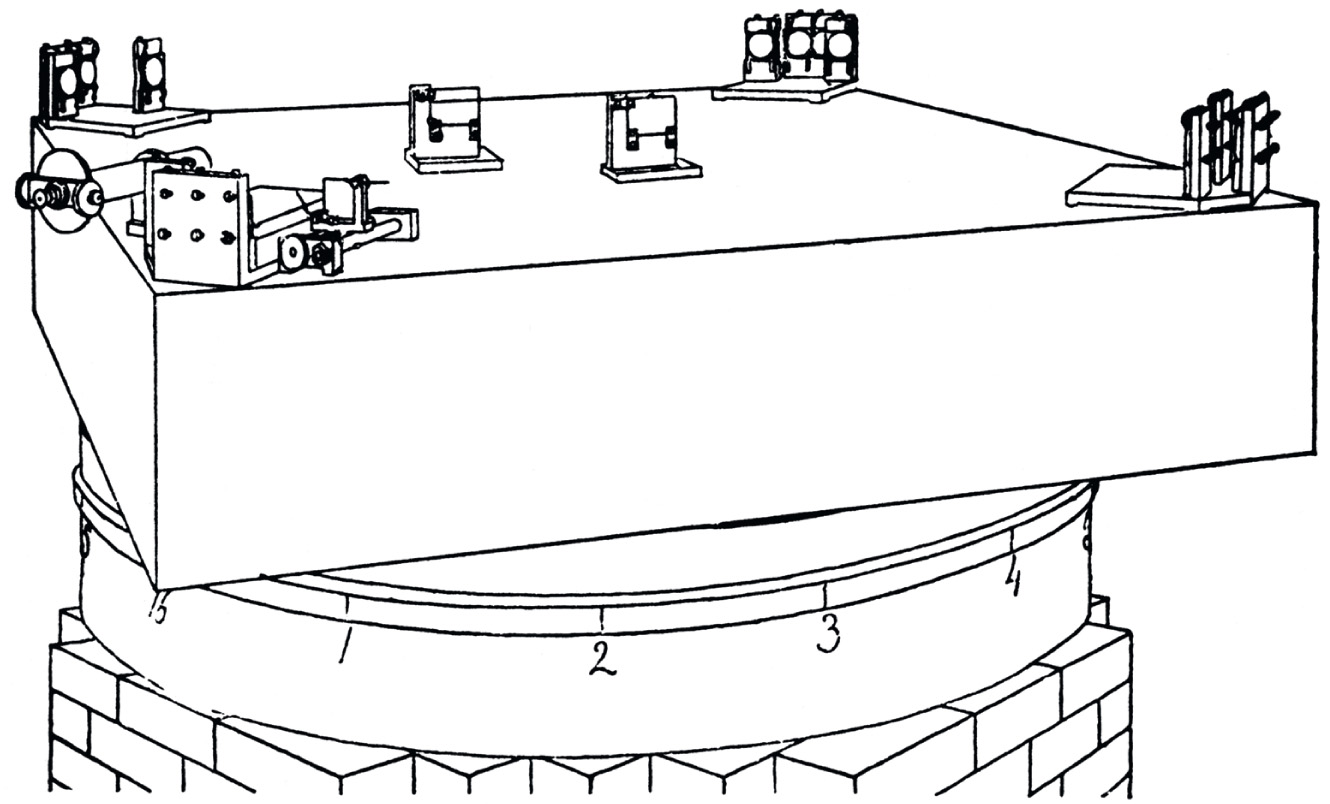
Albert Michelson (1852–1931) looking through a spectrograph.
After it had been established that light travels as a wave (see here), and the speed of light had been measured accurately enough to show that it obeys Maxwell’s equations for an electromagnetic wave (see here), the natural assumption was that there must be some substance through which the waves travelled, just as sound waves travel through water or air – or, indeed, through solids. This mysterious substance was called ‘the ether’. It was assumed that Maxwell’s equations were telling us the speed of light through the ether. But this substance would have to have some very curious properties. The speed of a wave through any material depends on the stiffness of the material (sound, for example, travels more quickly through steel than through air). Because the speed of light is so great (just under 300,000 kilometres per second), the ether must be extremely stiff – much stiffer than steel. On the other hand, because planets and other objects move through the ether without being impeded, it had to be very tenuous.
Putting this puzzle to one side, in the 1880s the American physicist Albert Michelson set out to measure the way the Earth is moving through the ether. He did his first experiments while working in Berlin in 1881, but then teamed up with Edward Morley in Ohio to carry out the definitive version of what became known as the Michelson-Morley experiment, completed in 1887.
The idea behind the experiment used interference between beams of light, echoing the way Thomas Young and Augustin Fresnel had established that light is a wave. Using a system of prisms and mirrors, a beam of light could be split in two. The two resulting beams could each be bounced between a set of mirrors and back to a detector, with each beam having travelled exactly the same distance but by a different route. Michelson reasoned that because of the Earth’s motion through the ether, the beams would take different times to complete their journeys, and get out of step with one another, so they would interfere to make a pattern of light-and-dark stripes like the one in the double-slit experiment (see here). The most extreme effect would occur when the beams were travelling at right angles to each other, with one beam travelling across the direction of the Earth’s motion and the other in the same direction as the Earth’s motion. The first beam should be unaffected by the relative motion of the Earth and the ether, while the second beam felt the full influence. But it would require exquisite care in building the apparatus, known as a Michelson interferometer, and carrying out the observations.


The whole apparatus was mounted on a block of sandstone floating in a bath of mercury, with hardly any friction. When the sandstone was given a gentle push, it would slowly rotate in a circle, while the experimenters watched the pattern of interference fringes to see if there was any change. This meant that they could monitor the entire possible range of orientations relative to the ether in a few minutes. They found nothing. In developments from the first experiment, they made observations at different times of day, and at different times of year, to see if there was any observable effect due to the Earth’s rotation or its orbital motion around the Sun. They still found nothing.
In a letter to Lord Rayleigh, a British physicist, Michelson wrote: ‘The Experiments on the relative motion of the earth and ether have been completed and the result decidedly negative. The expected deviation of the interference fringes from the zero should have been 0.40 of a fringe – the maximum displacement was 0.02 and the average much less than 0.01 – and then not in the right place. As displacement is proportional to squares of the relative velocities it follows that if the ether does slip past the relative velocity is less than one sixth of the earth’s velocity.’24
The experiment and its ‘null result’ profoundly influenced science in two ways. First, it was a key step in establishing the idea that the speed of light is (as Maxwell’s equations said it must be) an absolute constant, the same for all observers no matter how they are moving. The constancy of the speed of light was one of the postulates on which Albert Einstein would base his special theory of relativity in 1905, although he jumped off directly from Maxwell’s equations and was not particularly influenced by the Michelson-Morley experiment. Secondly, the experiment was a key step in the eventual death of the idea of the ether, and its replacement by a field theory in which electromagnetic influences propagate through empty space. In 1907 Michelson received the Nobel Prize for ‘his optical precision instruments and the spectroscopic and metrological investigations carried out with their aid’.